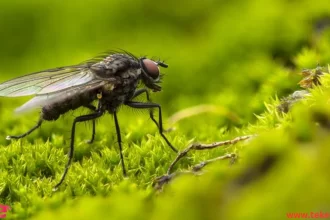The Morelet crocodile is considered a medium-sized crocodile species that lives in freshwater habitats in all Atlantic regions.
The scientific name of the Morelet crocodile is Crocodylus moreletii.
Let’s learn more about it from teketrek.
Facts about the Morelet crocodile
The Morelet crocodile belongs to the Crocodylidae family (reptiles).
The Morelet crocodile was discovered in the mid-19th century, and its scientific name is derived from this discovery.
This species has a color similar to the American crocodile but slightly darker.
The Morelet crocodile is often seen in slightly brackish coastal waters, where juvenile fish seek protection under denser cover.
Adult fish usually live in burrows during the dry season.
Morelet crocodiles lack osteoderms (belly bones) under the skin.
Morelet crocodiles spend a lot of time swimming, making them semi-aquatic reptiles.
Morelet crocodiles are cold-blooded animals. Therefore, it is important for them to stay on warm land to warm their bodies during daylight hours.
It uses their powerful tails to swim gracefully in the water, aiding in propulsion.
The Morelet crocodile has eyes with long slit-shaped pupils that narrow in bright light and widen in darkness, allowing it to control the amount of light entering.
Morelet crocodiles have a highly developed sense of hearing, with mobile flap-like ears that protect the ear from water.
The Morelet crocodile has a very strong sense of smell, which is said to be particularly strong when the crocodile is in the egg before hatching.
Morelet crocodiles spend daylight hours basking in the sun, despite their keen alertness and awareness of their surroundings.
In their communication, Morelet crocodiles tend to vary according to age, gender, and situation.

The Morelet crocodile specification
The body: The body of the Morelet crocodile can reach up to four meters in length, with an average Morelet’s crocodile size of three meters.
The nose:The Morelet crocodile has a snout and nostrils at the end of its nose.
The eyes: The Morelet crocodile eyes are located behind the nostrils and ears.
The eyes of the Morelet crocodile are characterized by their brown and silver color.
The sensory receptors: All sensory receptors are located at the same level in the upper part of the crocodile’s head.
The eyelids: The Morelet crocodile has eyelids covered with overlapping membranes, allowing it to see underwater.
The color: It has a dark gray-brown color with spots and dark stripes on the body and tail.
The legs: It has strong legs with exposed feet, claws, and large tails that enable them to swim with powerful propulsion.
https://teketrek.net/the-russian-tortoise-a-guide-to-one-of-the-hardiest-pet-tortoises/
Morelet’s Crocodile habitat
Morelet crocodiles primarily live in freshwater areas such as swamps.
They can also be found in forest habitats along riverbanks.
Morelet crocodiles have been found in the coastal plain of eastern Mexico, across most of the Yucatan Peninsula, and throughout Belize and northern Guatemala.
Morelet Crocodile Diet
The diet of Morelet crocodiles varies according to their age and size.
Young Morelet crocodiles eat invertebrates and small fish.
Adult Morelet crocodiles feed on aquatic insects and fish, as well as small birds and mammals.
As for adult Morelet crocodiles, they feed on larger prey, including birds, fish, lizards, turtles, and pets such as dogs.
During times of food scarcity, Morelet crocodiles can become man-eaters.
https://teketrek.net/the-strangest-animal-survival-strategies-in-winter/
Reproduction Stages of the Morelet Crocodile
Male Morelet’s crocodiles dominate other males in the area, and females mate with dominant males.
Eggs are laid between April and June.
The Morelet crocodile is unique because it is known to be the only crocodile that nests exclusively.
They lay approximately 20 to 40 eggs in nests.
After 2 to 3 months, the eggs hatch, and the hatchlings emerge.
Despite crocodiles being considered a threat to humans, Morelet crocodiles do not pose a danger to humans.
Furthermore, they provide numerous benefits to the environment and humans.
Morelet crocodiles prevent overpopulation of fish and marine animals, thus preserving the ecosystem.
They protect important water habitats from wild animals and help maintain marine life.
Morelet crocodile meat is considered a delicacy in some countries.
Crocodile meat is a traditional food in Australia, Thailand, Vietnam, and South Africa.

FAQs about Morelet’s crocodile
Are Morelet’s crocodile rare?
The IUCN first assessed Morelet’s crocodile in 1982, listing it as an endangered species. By 1996, the status was updated to reflect improvements in its population numbers.. As of the 2020s, hunting is rare, and some 80,000-100,000 adults are thought to live in the wild.
Are morelet crocodiles aggressive?
Amongst the South American crocodilian species, Morelet’s crocodile is less commonly implicated in attacks on humans than C.acutus and the Black caiman (Melanosuchus Niger), but nonetheless non-fatal attacks are reported every year.
How big do Morelet’s crocodiles get?
Morelet’s crocodile, also known as the Belize crocodile, is a medium-sized species native to the freshwater habitats of Mexico, Belize, and Guatemala.Adult males average 3 meters (9.8 feet) in length.
In conclusion, it is important to emphasize the significance of these crocodile species.
Efforts should be made by the International Union for Conservation of Nature to protect them from predation and extinction.
We hope we have provided you with useful and valuable information and amazing facts that will help you learn more about the Morelet crocodile.
Reference





